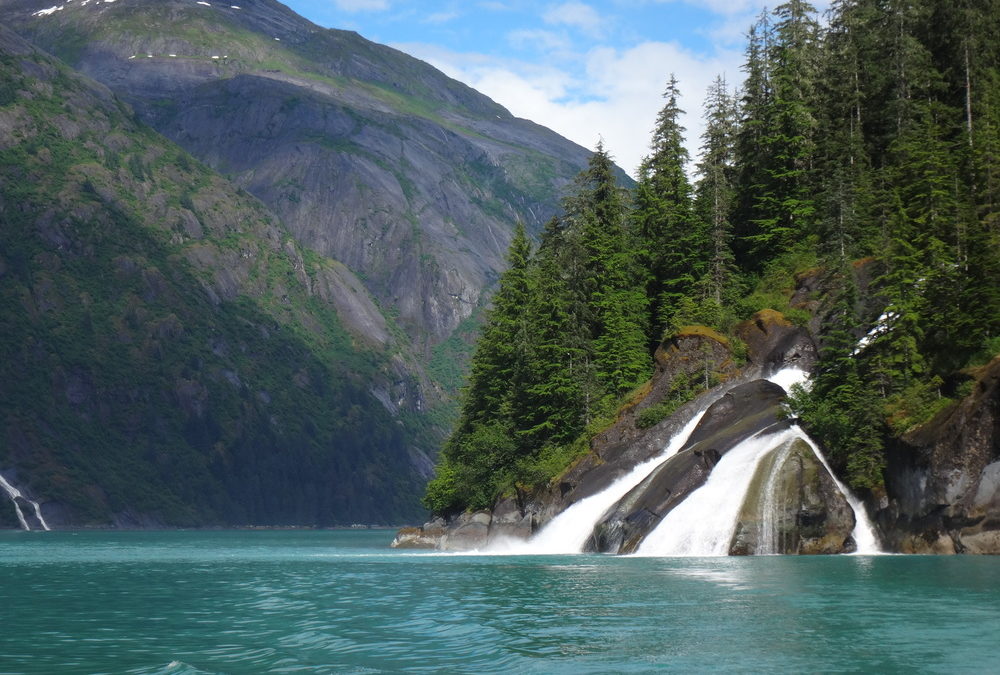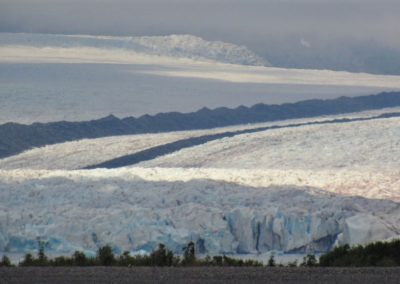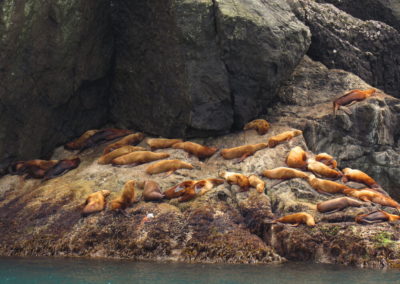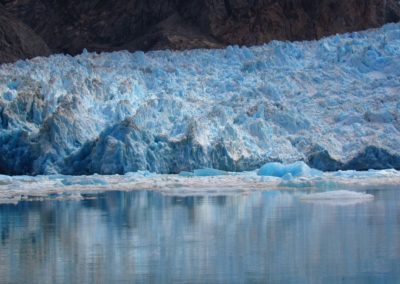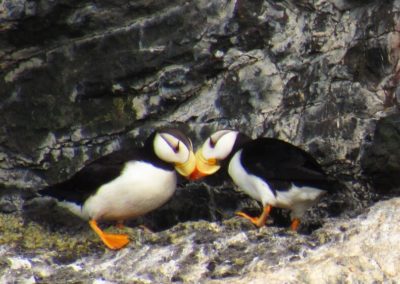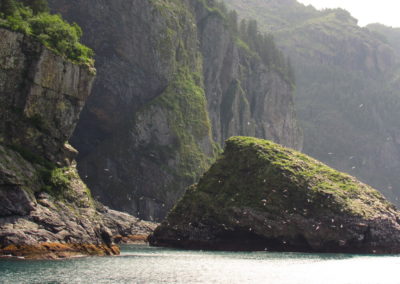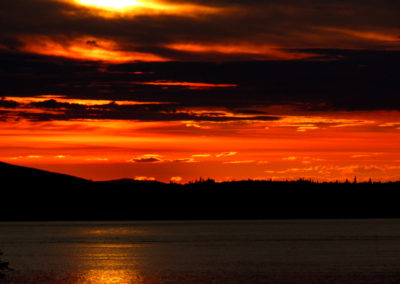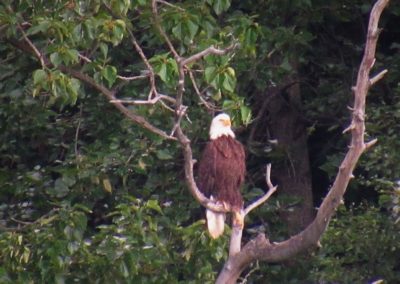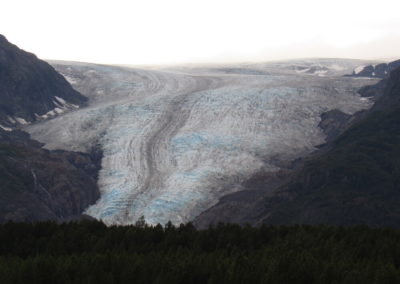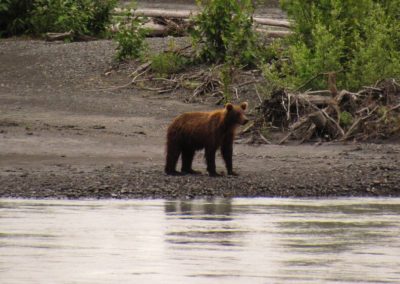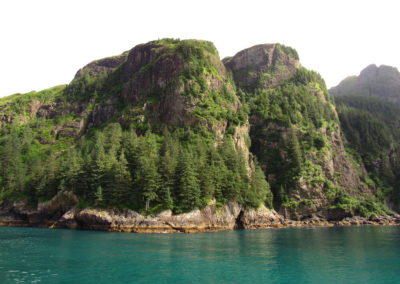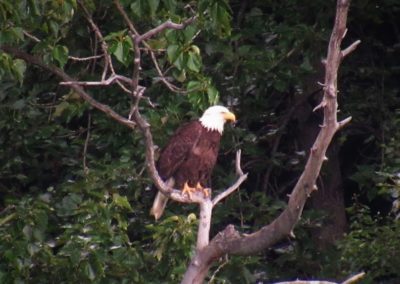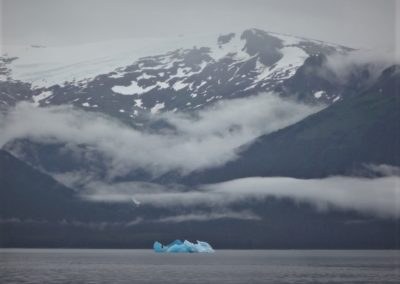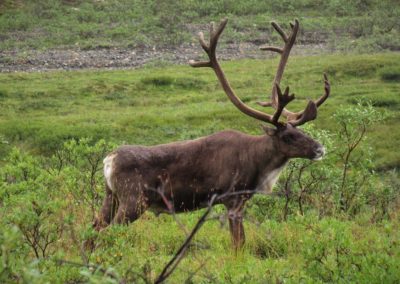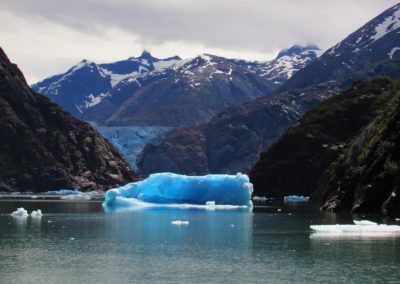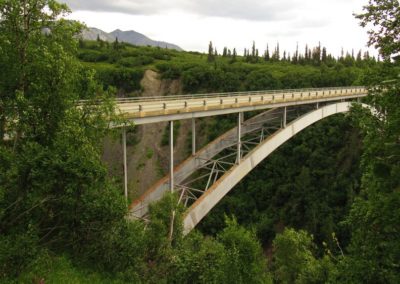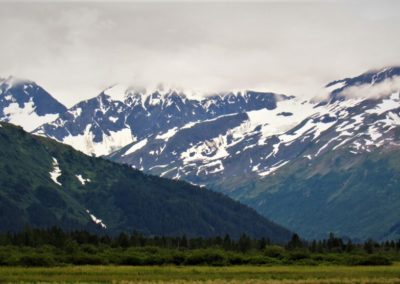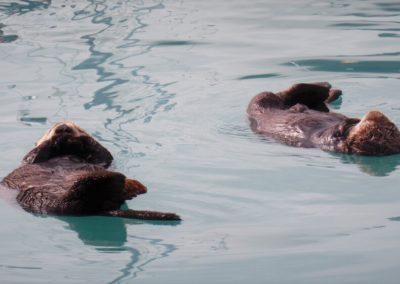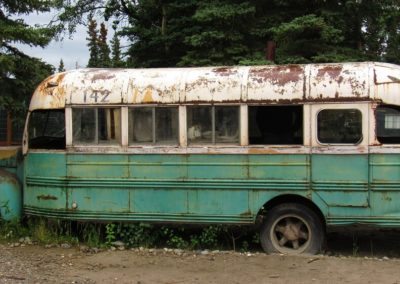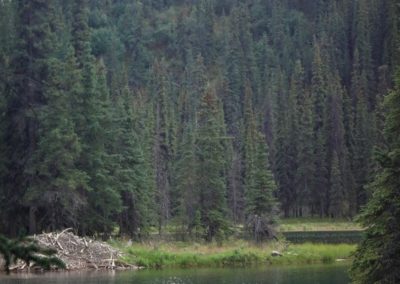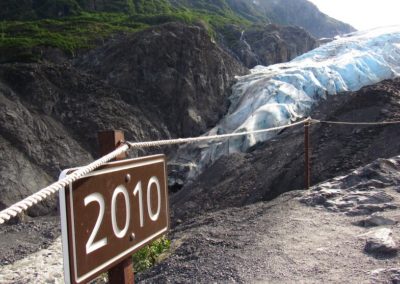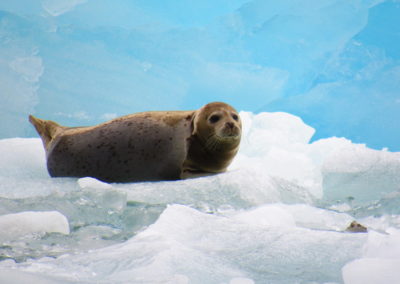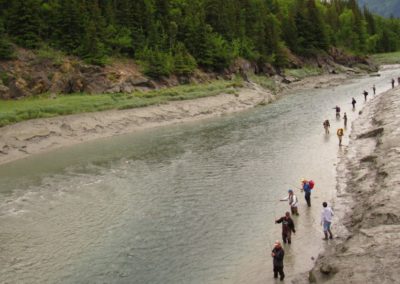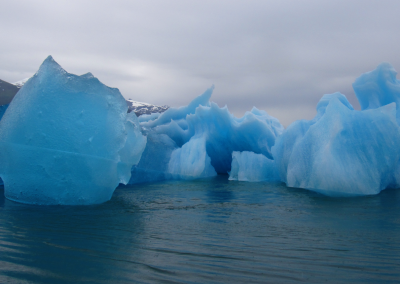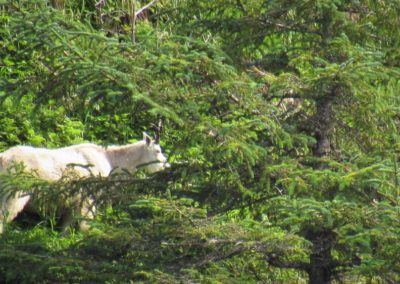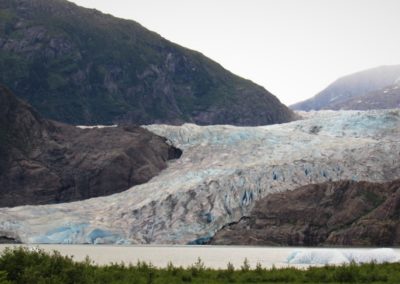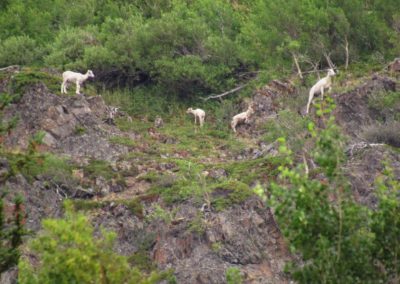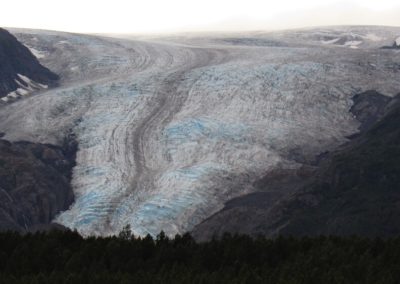The reactions of the people who knew we went to Alaska ranged from “Wow, must be so beautiful!” to “Alaska ??? What were you guys doing there?”
The two comments reflect the reasons for us wanting to go there. For being such a secluded place, despite so much stunning beauty, it is not a popular tourist destination. There, you won’t find those crowds from tour buses taking pictures of the same place. No, Alaska is a place to enjoy nature, with the serenity it deserves.
But where to go in Alaska ?? Let’s find out…
Alaska is really, really, really big; not only is the largest American state but also larger than the second, third and fourth combined. This implies a diversity of landscapes and climates. For better understanding, I will divide the state into 5 regions.
Alaska: An Overview by Region
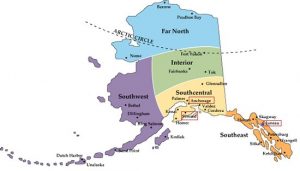
Note: Regional division according to the official website of the government of Alaska, image NOAA (National Oceanic and Atmospheric Administration) – Alaska/US.
Far North: It is Alaska’s coldest region. Most of it is in the Arctic Circle. It is a place for anyone who wants to experience Alaska’s most extreme experience. In this region the sun does not rise for most of the winter (imagine what the day is like without sunlight). And, in the summer, it never sets. It is a region with beautiful landscapes, and the natural habitat of the polar bear. But it’s the region with the least accessibility. The Dalton Highway is the road that connects Fairbanks to the far north on Prudhoe Bay, but it has a lot of gravel, little traffic, and very few convenience stations. There are bus options leaving from Fairbanks that make this route in 2 days. Far North is also the place where native culture, Iñupiat, is richer because it has less influence from American culture. The city of Barrow, also known by its name in Iñupiat Utqiagvik, is the northernmost city in the United States, a city that evolved from an Eskimo village that lived a subsistence life in the difficult Arctic climate. Today there is the Heritage Center Iñupiat, an educational museum about the history and traditions of Iñupiat. To see polar bears, the best place is Kaktovik, a small village on the coast of BarterIsland, where subsistence activities are still essential to the community. Barrow (Utqiagvik) and Kaktovik are accessible only by plane.
Interior: Central Alaska is home to Denali National Park and Mount Denali, also known as Mount McKinley. At about 5,500m in height, it is the highest mountain in North America. This region harbors a large part of alaskan wildlife, including bears, moose, cariboos, and dall sheeps; and also Denali Park, which is one of the most visited places by tourists. The largest city is Fairbanks, which is called the ‘Golden Heart City’ for having its development very connected to the exploration of the gold. Being the second most populous city in Alaska, it is accessible by road, airplane, and train, and is considered one of the best places to see the Northern Lights. Less than 100km east of Fairbanks is the Chena Hot Springs, and a little more than 20km to the south is the town called North Pole, which receives hundreds of thousands of letters addressed annually to Santa Claus.
SouthCentral: It’s the most visited and accessible region of Alaska, with milder climate and opportunities for many different activities, on land or at sea. It is home to Alaska’s largest city, Anchorage, as well as home to small, charming towns close to the sea and surrounded by nature. A very good place for a ‘roadtrip’ with several stops. The landscape varies from parks and forests to rivers filled with salmon, fjords, glaciers, and beaches; not to mention all the wildlife that lives, in the sea, on land and in the air.
SouthEast: Also called Inside Passage, because it is a sort of narrow corridor to the west of Canada, the Southeast region is all cut by the sea and the mountains. So much so that even the state capital, Juneau, despite being on the mainland, is inaccessible by road or train. Sitka, the former capital of Alaska (when the state was part of Russia), is actually on an island. The region is full of mountains, long fjords, glaciers and islands with forests; and is habitat for many eagles, seals, orcas, whales, puffins, among others.
SouthWest: In the Southwest, you will find Bristol Bay, one of the most abundant fishing spots in the world. That’s where most of salmon comes in the United States. Katmai National Park and Kodiak Island have around 2,500 grizzly bears feeding on the salmon. Some licensed agencies offer commercial tours for experiencing that classic scene of the bear standing still waiting for the salmon to jump into his mouth. The region is only accessible by small boats and airplanes, so the tours are super exclusive and expensive. Katmai National Park also features active volcanoes of the Valley of 10,000 Smokes. The landscape of the region is breathtaking, as is the Aleutian Islands, a cluster of about 70 islands, mostly volcanic. The region often attracts tourism related to fishing, photography and wildlife.
Alaska: Basic Travel Road Map
So, back to the question, which region to go to in Alaska? My answer would easily be “to all of them”, considering that each has its own attractions. But if time is a limiter (as it usually is), for a first visit, I think the Anchorage-Denali-Seward-Juneau basic tour, which was what we did, is a good call! I will explain it in more detailed.
We chose to do the Anchorage-Denali-Seward stretch by car. For our travel style, it is the best option, especially for the liberty of being able to stop wherever you want to spot an animal or take pictures of the landscape. The routes from Anchorage to the Denali region and also to Seward are very scenic. To be able to appreciate it properly, one should always consider a much longer time than the ‘Google Maps’ time. For those who do not drive, or would not like to take the wheels, these same routes can be done by bus or even by train, through beautiful landscapes, by the Alaska Railroad.
Click on the links below to go directly to each region:
Anchorage
Welcome to Anchorage! For most people, this is Alaska’s gateway. With frequent flights from the many US cities and Canada, it is a good way to start the trip.
Anchorage looks like a typically american city. It is common to see large boulevards and famous retail stores throughout the city. But do not be fooled by appearances. Before long you realize that this is no longer any American city.
On the day of arrival, we took the opportunity to get to know the city a bit, and decided to have dinner in a restaurant that was indicated to us by our hosts – we stayed in a Airbnb house. The restaurant is Simon & Seafort’s, which is good both for a more upscale dinner as for a happy hour, and has a sea view. And it was eating a delicious dinner that we were watching the sunset – at midnight!
 Mignight sunset in Anchorage, Alaska!
Mignight sunset in Anchorage, Alaska!
On the second day in Anchorage, our main activity was exploring the Tony Knowles Coastal Trail, an asphalt trail that goes from Downtown to Kincaid Park. We rented our bikes at the Downtown Bicycle Rental store (we pay $ 18 per bike), which is close to the beginning of the course. The distance is 11 miles (about 18 km) one way, but without a great deal of difficulty. Downtown-Kincaid route is mostly flat with a steep (and endless) ascent at the very end.
Just the view of the ocean already makes it worth a walk or ride on this trail; but in addition, on some points of the trail, on a clear day, it is perfectly possible to see Mount Denali from the park. Depending on the time of year, there are also whale sightings. The trail is also on the side of Anchorage International Airport, where you can see planes taking off. But the biggest surprise for us that day was something else: less than 10 minute riding, a passerby warned us that he had seen a Black Bear on the trail. At that moment, we thought about stopping. As the trail was very busy, we decided to follow the path, but more slowly and with more attention. But that same warning happened a few more times, and also in other parts of the trail. Fortunately, we did not come across any bear, but it was good to know that they could show up there.
Just a quick note here, on the bear issue. Almost everywhere in Alaska there is a warning sign on the possibility of wildlife occurrence and instructions on how to avoid dangerous encounters and even what to do in case they happen. Of course, the presence of bears so close to civilization is not so common. The bears themselves do not look for humans. The only thing they are constantly looking for is food. And that means that our food, and also our junk, might end up attracting them to areas closer to the city. The occurrence of bears outside their natural environment is a consequence of the irresponsible management of human resources. And this is dangerous for both the human being and the bear.
Unfortunately, our time in Anchorage was short (I recommend 3 whole days) and because of that we could not do more activities. There are two other places in the outskirts of Anchorage that I think are worth a visit: the Eagle River Nature Center (a park with several options of guided walks and trails of easy level) and the Chugach State Park. There is a trail called Williwaw Lakes Trail which is very popular around residents of the city. The landscape is simply beautiful, passes through 9 lakes between mountains and forests; but takes up a whole day. It’s about 12 miles of moderate level trail (average time of trail: 7 hours).
Denali
The distance to our hotel in Denali was about 225 miles. The road is paved and kept in good condition, but even so, one should consider at least an entire period of the trip, to have time to enjoy the scenery and photograph at will. Also, it is not uncommon to have animals invading the lane, so be careful! Remember, you are in Alaska, a place full of wildlife.
There are several stops on the road. I will list here only the main ones (in order, towards Anchorage> Denali):
- Mirror Lake in Chugiak (very close to Anchorage) – is a pleasant space where the locals rest and enjoy the lake as if it were a beach. Great place for a picnic.
- Veteran’s Memorial Loop – just after the lake exit, this war memorial is also a place with a beautiful view of Mt. Denali.
- Hurricane Gulch Bridge (172 mile) – Alaska’s largest and tallest bridge, which goes through a major geological fault, where it had a devastating earthquake in the 1960s. The view from the ground, which suddenly plummets into a 100m high abyss with the Hurricane Creek underneath is sensational.
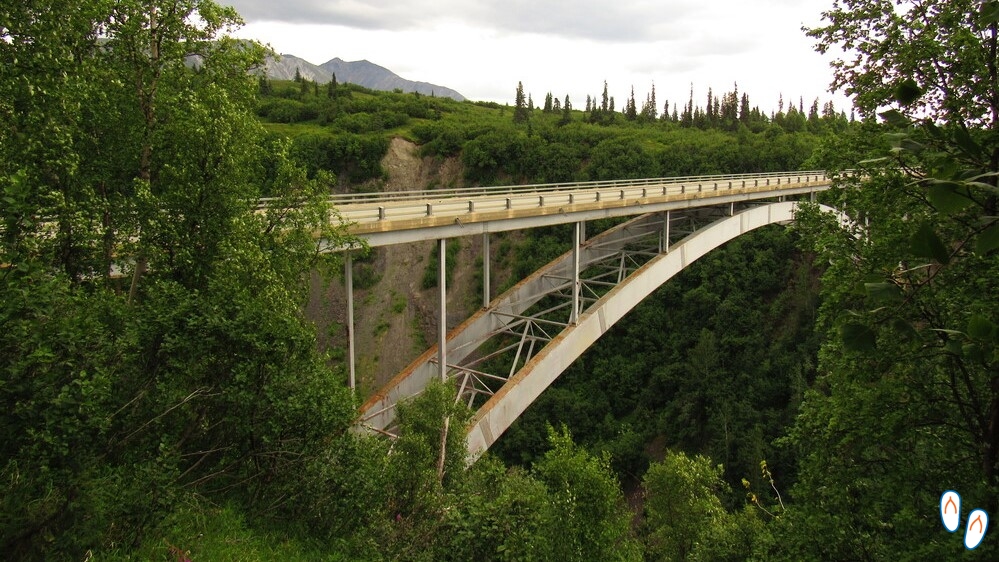 Hurricane Gulch Bridge, highest bridge in Alaska.
Hurricane Gulch Bridge, highest bridge in Alaska.
Arriving in the Denali area, we decided to extend to Healy, where is the replica of the bus known as ‘Magic Bus’ used for the recordings of the film ‘Into The Wild’. The film tells the true story of Christopher McCandless, a young man who decided to drop everything he had to live for some time in Alaska away from civilization and material attachments. The actual bus used by Chris as a shelter and where he spent his last days alive is still in the original place, which sits on a trail called Stampede Trail, near Denali, but it’s a long, hard-to-reach trail that requires time and a lot of training. The bus chosen by Sean Penn for the film’s recordings, is at 49th State Brewing Company, a brewery in the town of Healy, and contains photos and original letters of Christopher McCandless.
 “Magic Bus” used for the footage of Sean Penn’s Into The Wild.
“Magic Bus” used for the footage of Sean Penn’s Into The Wild.
In the three nights we spent in the Denali area, we chose to stay at the Carlo Creek Lodge, a simple yet comfortable inn, and about 20 minutes from the entrance to Denali National Park.
The entrance to Denali National Park is USD 10.00 per person (over 15 years old – ref. to 2017), which allows the visitor to enter the park for 7 days. As a US National Park, the entrance is included in the ‘America The Beautiful’ pass, an annual pass option for all national parks in the country for groups of up to 4 people, which costs USD 80.00 (value in 2017); If you are planning to visit other American parks within a year, it may well be worth it. The bus ticket for access inside the park is charged separately.
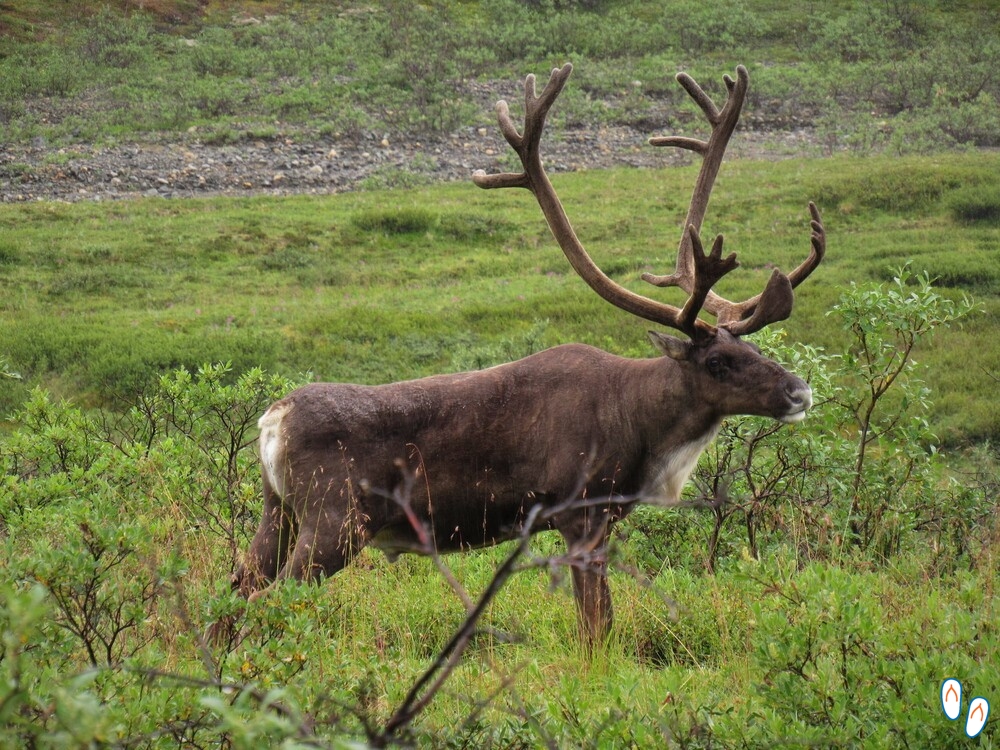 Caribou at Denali National Park
Caribou at Denali National Park
To visit the Park, my suggestion is that you reserve at least 2 full days. I’ll explain below how it works:
• The main road of the park is 92 miles (150km) long, but only the first 15 are open for regular vehicles, and only in the summer season (05/20 to mid September). In autumn and spring seasons, the road may be closed due to weather conditions.
• In these first 15 miles, there are several short trail options, such as the Horseshoe Lake Trail (5.1km loop trail) and McKinley Station Trail (2.6km); and a longer and more difficult one, which is the Triple Lakes Trail (15.3km one way). To access the full trail map, click here. At the park’s Visitor Center there’s plenty of information about the trails.
• From a certain point in the park, tour buses are the only motorized vehicles that can go through. The ride on the bus usually provides the best chances of wildlife sighting, as you enter an area of the park with less amount of vehicles and people, as well for having other people inside the bus who are also looking for animals.
• There are 2 types of buses: the Denali Tour Experience (guided tours, with 3 different themes), and the Shuttle Bus System (they are the “common” buses, with no guide, where you can go up and down anywhere you want). We decided to use the Shuttle Bus, because it is cheaper and also because we like to feel free in case we choose to get off somewhere. In either case, it is recommended that you separate 1 full day for the bus ride.
• Regarding the shuttle bus: it’s the same road for all the stops, however, you buy the ticket according to the final stop point you want. There are 5 stop options, with the shortest route having a scheduled duration of 6 and a half hours (round trip), while the longest route has a duration of 13 hours. You can get off at any time but, if you get off on the way to your stop, you can only re-board another bus with the same destination. If you get off on the return route, you can re-board on any Shuttle Bus that has a seat available.
• It is important to notice if the park is crowded that day, because if you decide to leave the bus, you will have to wait for another one with seats available. In a busy day this could take hours!
• Bus tickets start selling 2 days in advance. The best thing to do is to buy as soon as possible to get the best departure times, especially if you intend to take longer routes or do some hikes between stops.
 Horseshoe Lake Trail
Horseshoe Lake Trail
The day we arrived at Denali, we went to the Visitor Center to buy the tickets for the bus. We decided for the bus to the Eilson Visitor Center, which takes around 8hrs round trip (we paid USD 34.00 per person). The best departure times were only available within 2 days, so we decided we would visit the first 15 miles on the next day and take the bus tour for last. We did the Horseshoe Lake, McKinley Station, and also the Savage River Loop Trail (accessible by car or park bus). On those trails we saw a large amount of small animals, like the snowshoe hare and the artic ground squirrel. At Horseshoe Lake, we could see a moose from the beginning of the trail, and on the lake we saw beavers working.
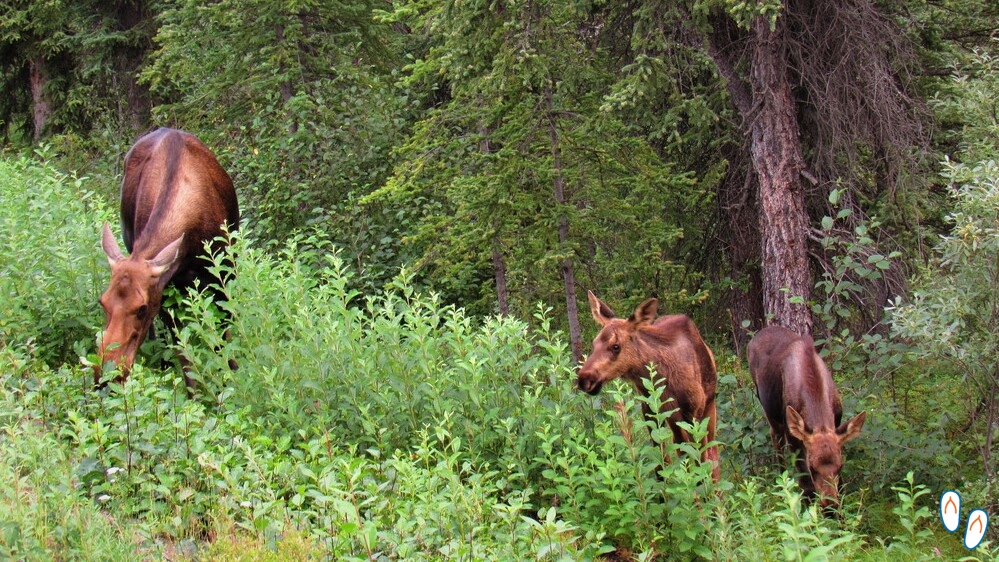 Mamma Moose with her 2 cubs at Denali National Park, Alaska
Mamma Moose with her 2 cubs at Denali National Park, Alaska
 Mamma Grizzly Bear and her 2 cubs at Denali National Park, Alaska
Mamma Grizzly Bear and her 2 cubs at Denali National Park, Alaska
On our last day in Denali, we arrived at the Visitor Center at the scheduled time to take the tour bus. Anyone who is interested in taking a hike along the way must be very well prepared for any kind of situation. This includes clothing that is appropriate for sudden changes in weather, water, food, and compass. And be sure to read all safety guidelines for wildlife, and also bring a bear spray. Never hike alone! To walk inside the park, it is most appropriate to walk in groups of at least 4 people.
We ended up deciding not to change buses, since, in terms of both landscape and wildlife, the route that the shuttle does is more than enough. There are some pre-programmed stops for people to use the bathroom, or to take pictures, and every time someone spots an animal, the bus stops for photos. It is important to bring a camera with a good zoom, many of the animals will be in a distance.
Seward
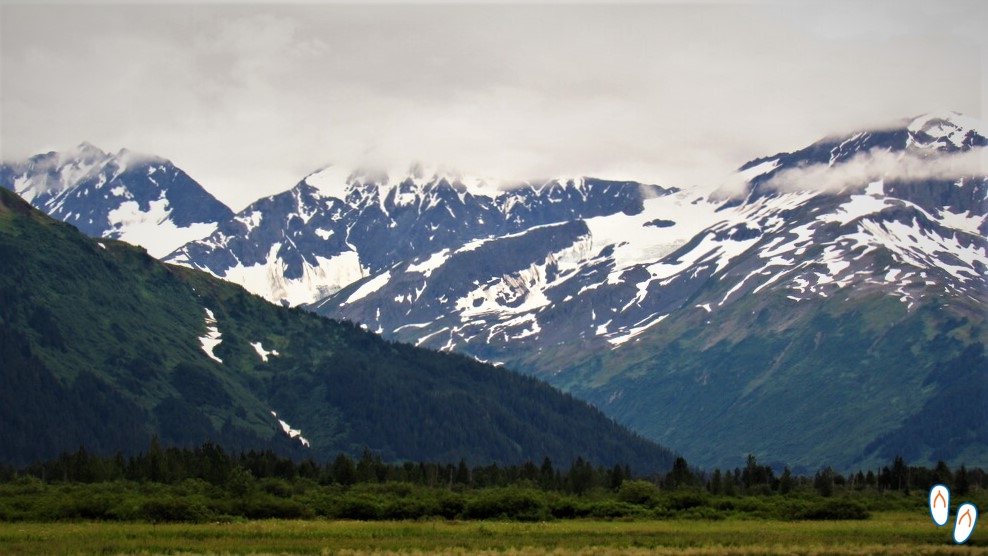
On our sixth day in Alaska, we took the road again – this time heading to Seward, a port city on the Kenai Peninsula, south of Anchorage. It is also a scenic route, with several stopping points, and great chances to see wildlife on the way. The main stopping points are:
• Potter Marsh Boardwalk – a fast circuit on a boardwalk, designed for wildlife viewing in a wetland. It is very common to see several types of bird, including the famous bald eagle, and different species of salmon. In summer and fall, salmon come back from the sea to this wetland to fertilize the eggs. With luck, one can even see also moose and bears.
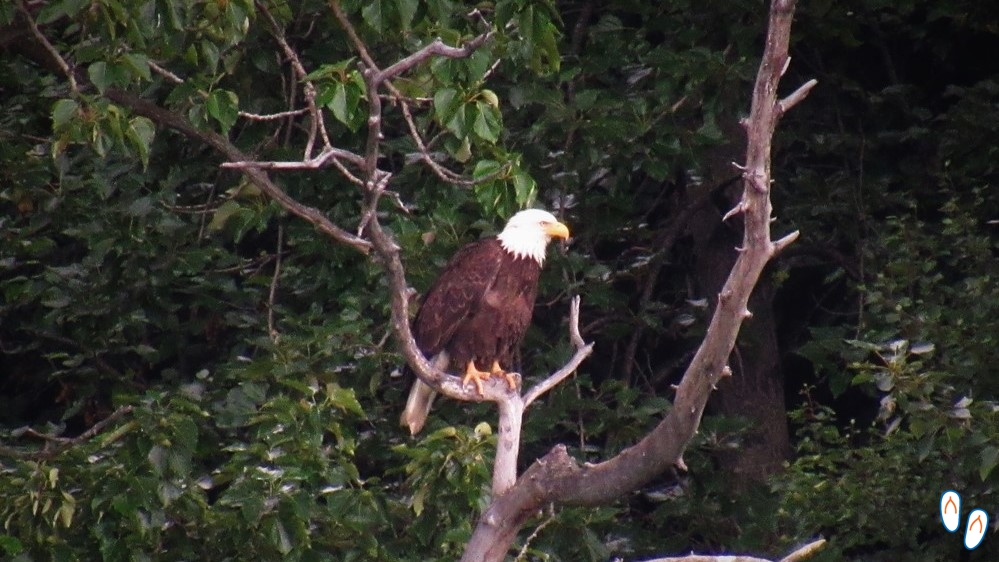 Bald eagle in Potter Marsh BoardWalk, Seward Highway
Bald eagle in Potter Marsh BoardWalk, Seward Highway
• Beluga Point – is a stopping point with a beautiful view of the Turnagain Arm, where in July and August it is not uncommon to see belugas hunting salmons. We did not have that luck – however, as we stopped, we noticed a bunch of Mountain Goats up there on the mountain behind us, which we wouldn’t have seen if we had just gone straight ahead. In this place, it is also possible to witness the occurrence of a very interesting phenomenon, which is known as Bore Tide. It’s a huge wave or series of waves that advance down Turnagain Arm in a wall of water up to 3mts high. They come in after an extremely low tide created by the full or new moon.
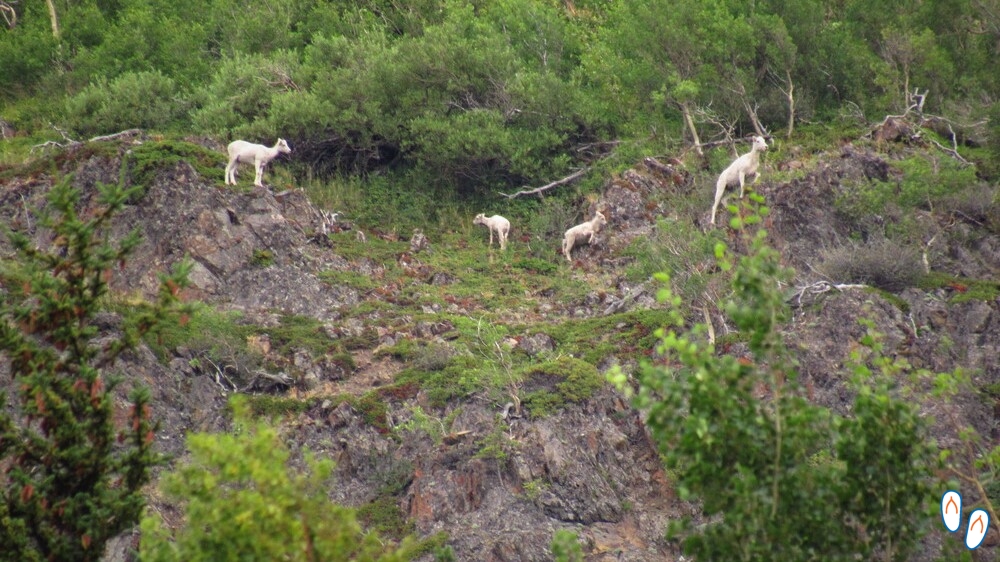 Mountain Goats behind Beluga Point, in Seward Highway – Alaska
Mountain Goats behind Beluga Point, in Seward Highway – Alaska
• BirdCreek – is a small river among the mountains where, in summer, sport fishing is allowed. The water of the creek has a blue color, and the landscape with the mountains in the background is very beautiful.
 Sport fishing at Bird Creek, Seward Highway.
Sport fishing at Bird Creek, Seward Highway.
• Alaska Wildlife Conservation Center (AWCC) – is a nonprofit organization dedicated to the protection of seriously injured animals or orphans that cannot survive on their own. This organization does a very good job of providing a home for these animals and rehabilitating them so that they can one day return to nature. Some of the animals that live here today are bison, bears, elk, musk oxen, lynx and caribou. The AWCC charges a fee of USD 15.00 (value ref. To 2017) per adult, which is intended for maintenance and animal rescuing.
• Summit Lake and Lower Summit Lake – Two beautiful lakes on the left side of the highway in the direction of Anchorage> Seward.
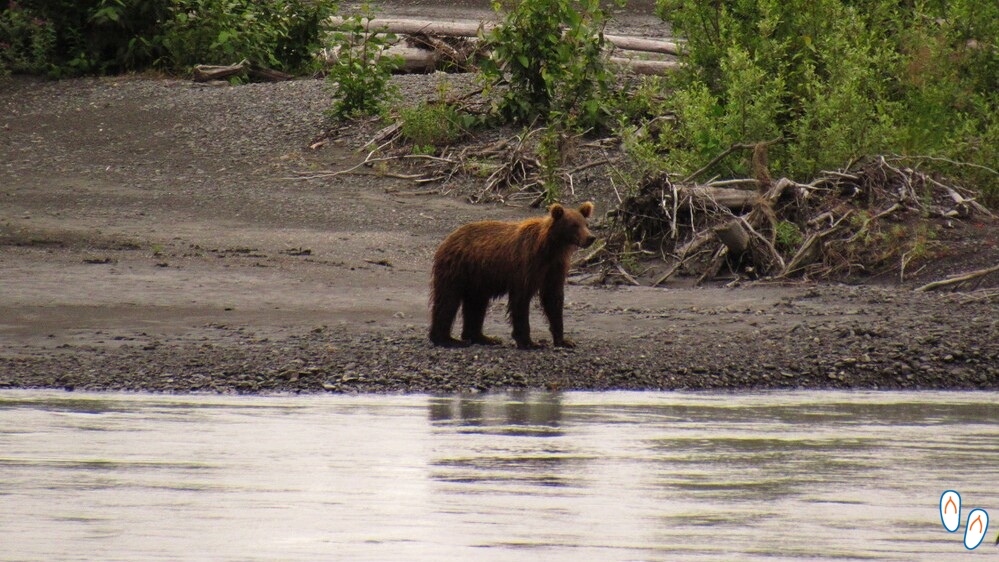 Black Bear seen from Seward Highway, in our Road Trip in Alaska
Black Bear seen from Seward Highway, in our Road Trip in Alaska
• Bear Creek Weir – near Seward, there are several streams on the side of the road where you can see salmon swimming upstream (from July to September). It’s a dam where you can see the salmon jumping the barrier to follow its way in the river that connects the Bear Lake to the Resurrection Bay. To get there, you have to make a small detour from Seward Highway.
 TurnAgain Arm, in Seward Highway, next to Beluga Point.
TurnAgain Arm, in Seward Highway, next to Beluga Point.
The town of Seward has a port city charm, and the impression I had is that a lot of people come from Anchorage to spend the weekend. We stayed at Hotel Seward, which was the 1st hotel in the city, and suffered a great fire in 1941. It is a good option of a cozy hotel and very well located.
On the day of our arrival, after dinner, around 11pm, we decided to take a walk along the shoreline near the hotel, unpretentiously. We noticed something moving in the water. After a while we realized it was a little otter, just swimming and relaxing. She showed up just for us, with no one else to see. It’s these totally unexpected moments that make a trip to Alaska unforgettable.
 Otters relaxing in Ressurection Bay, Seward, Alaska.
Otters relaxing in Ressurection Bay, Seward, Alaska.
In Seward, we hired the Wildlife Cruise with Major Marine Tours. It was a 5-hour boat tour on the Kenai Fjords heading to Bear Glacier. Despite being a little expensive (USD 88.00 per person), it was well worth it. The company’s service is excellent, the fjord landscape is wonderful, and the wildlife was exuberating. On this tour we could see the beautiful humpback whales, sea lions colonies, dallsheeps in the mountains, several sea otters and different species of birds, including puffins, which are very colorful birds with the colorful beak (usually only found in colder regions). Here are some photos of this tour:
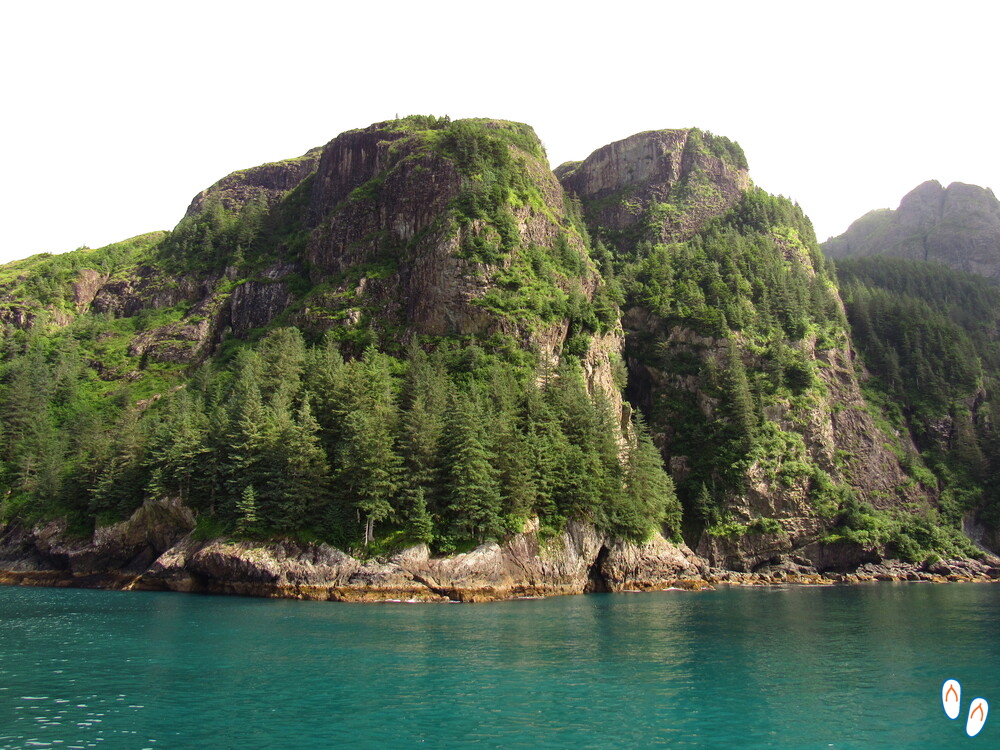
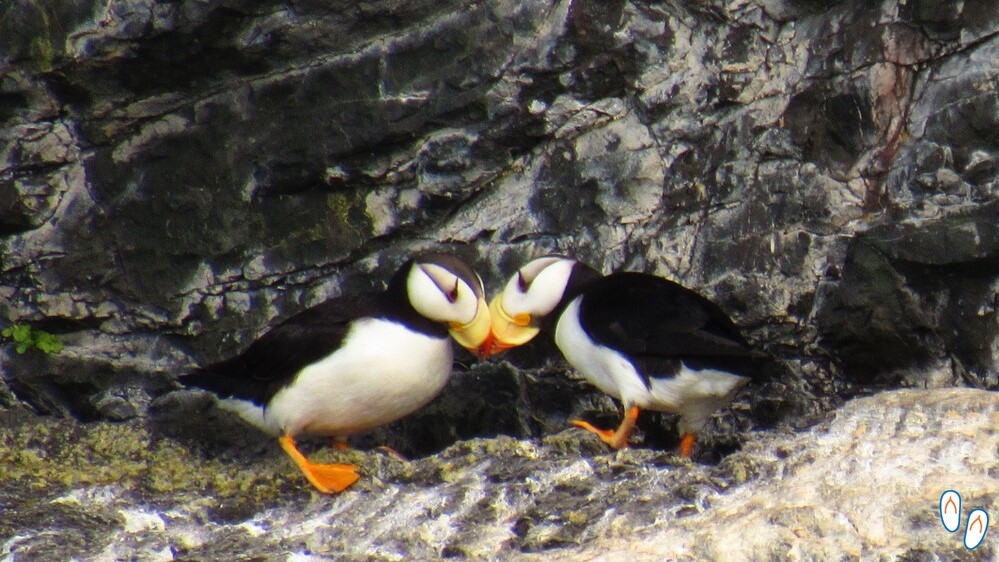 Puffins!!!!!!!!!
Puffins!!!!!!!!!
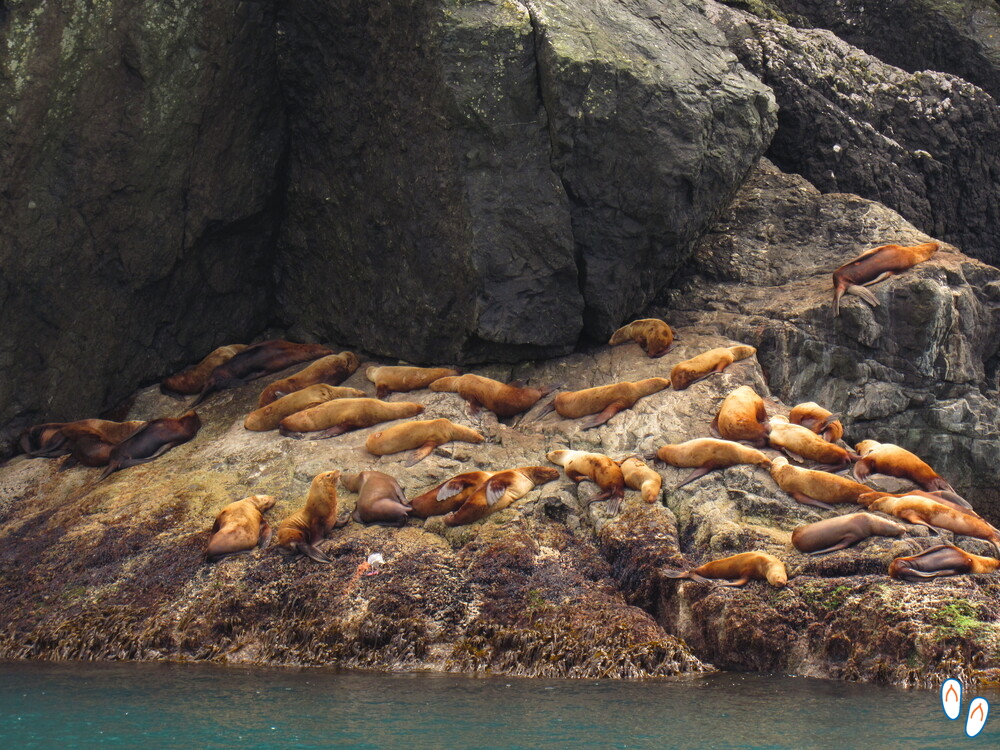 Many and many Sea Lions
Many and many Sea Lions
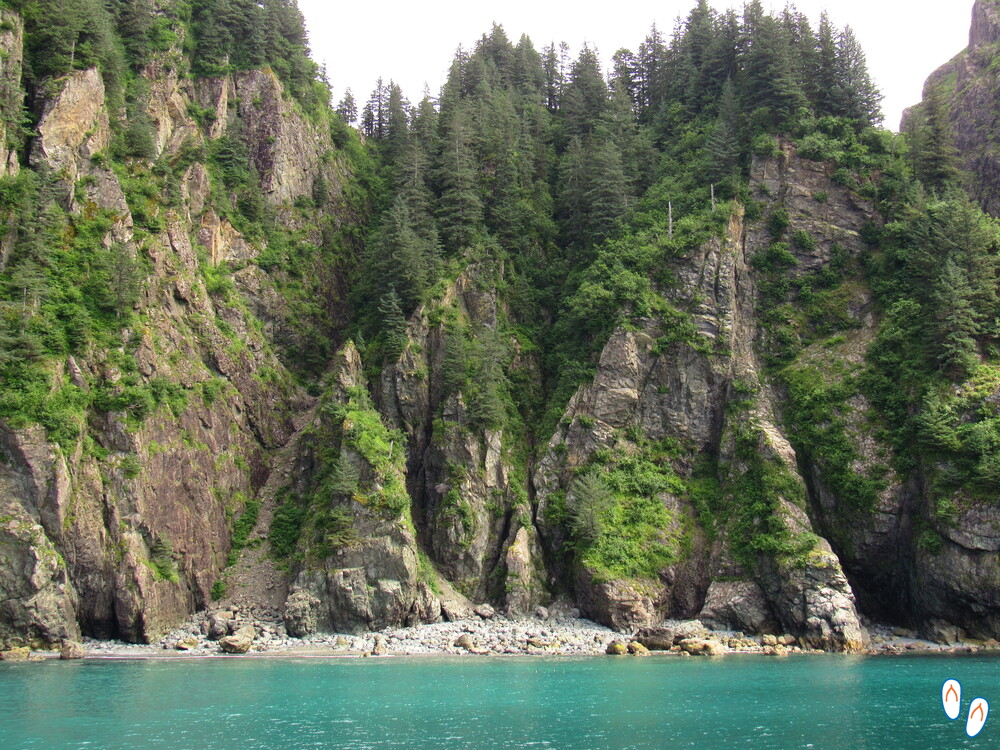
 Mountain Goat, one of the most difficult animals to spot
Mountain Goat, one of the most difficult animals to spot
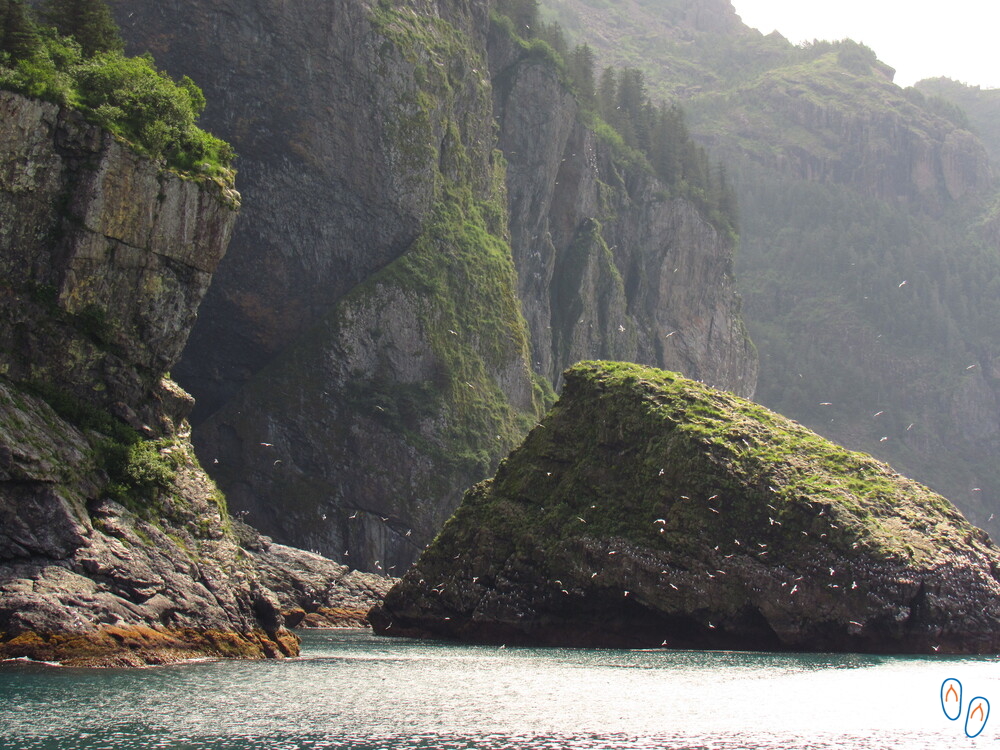
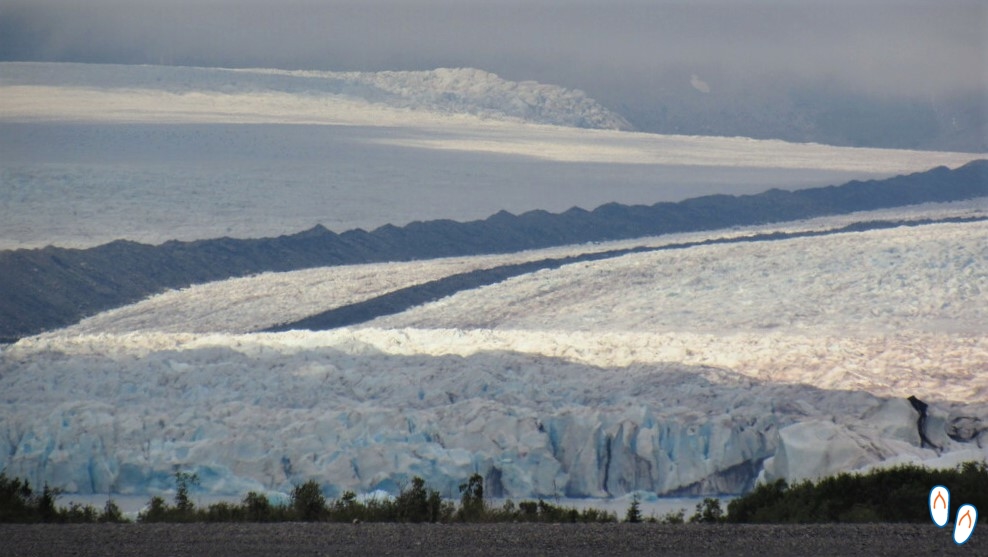 Bear Glacier, final stop in the Wildlife Cruise in Resurrection Bay, Seward
Bear Glacier, final stop in the Wildlife Cruise in Resurrection Bay, Seward
On the day after we did the trail to see the Exit Glacier, one of the largest glaciers in the Seward area. There are 3 trail options for the glacier:
• Harding Icefield – full-day, moderate-difficult track. About 8 miles of ‘loop’ trail with a high elevation gain that ends with a spectacular view from above the glacier. It requires planning and preparation. To learn more, click here
• Marmot Meadows – begins at Harding Icefield starting point, but goes only half way. It’s 2,8 miles with a steep climb. You can do it with a guide.
• Edge of the Glacier – that’s the one we did. It’s a short trail mostly flat. It gives you a good view of the glacier. No difficulties, except for the large amount of flies on the trail.
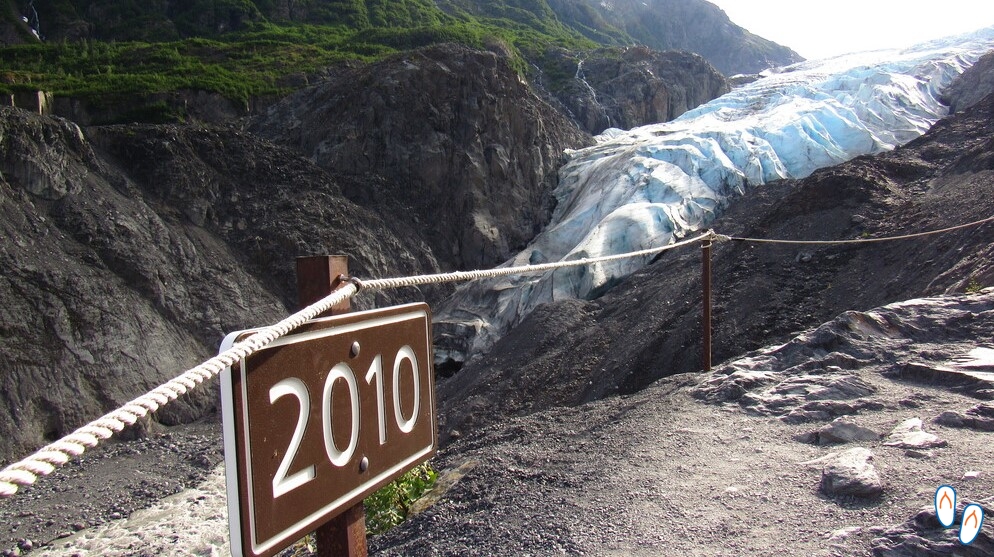 The sign marks the point the glacier reached in 2010. All over the world, the glaciers are shrinking – near the Artic it seems to be happening even faster.
The sign marks the point the glacier reached in 2010. All over the world, the glaciers are shrinking – near the Artic it seems to be happening even faster.
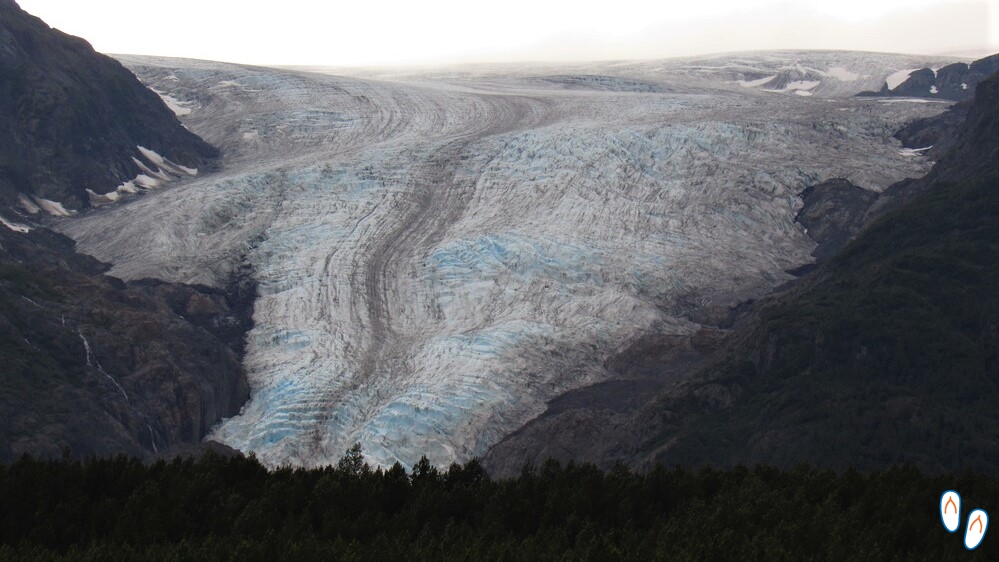 Exit Glacier, seen from a distance
Exit Glacier, seen from a distance
Juneau
Leaving Seward, we returned to Anchorage by car to catch a flight to Juneau. After seeing so many beautiful things in Alaska, I did not know what to expect from Juneau. But from the airplane’s window I could see it would continue to amaze me.
Juneau is the capital of Alaska. In fact, the city does not look like a capital. A small, mountainous town that is not accessible by roads; famous for its gastronomy, and full of shops and restaurants. Being among the mountains, with cold, humid weather, it has lower temperatures than Anchorage and Kenai Peninsula, and it rains over 200 days a year.
And it was exactly for that reason that we almost gave up on our boat trip to Tracy Arm Fjord. Thanks to the Tripadvisor’s contributors, who repeatedly advise us to do it despite the bad weather, we decided to go forward. Even so, we board the boat a little concerned because the day was rainy and foggy. It was a full day tour with Adventure Bound Alaska that costs $160.00 per person (yes, the prices in Alaska are always high) but I can say, without a doubt, it’s worth it!
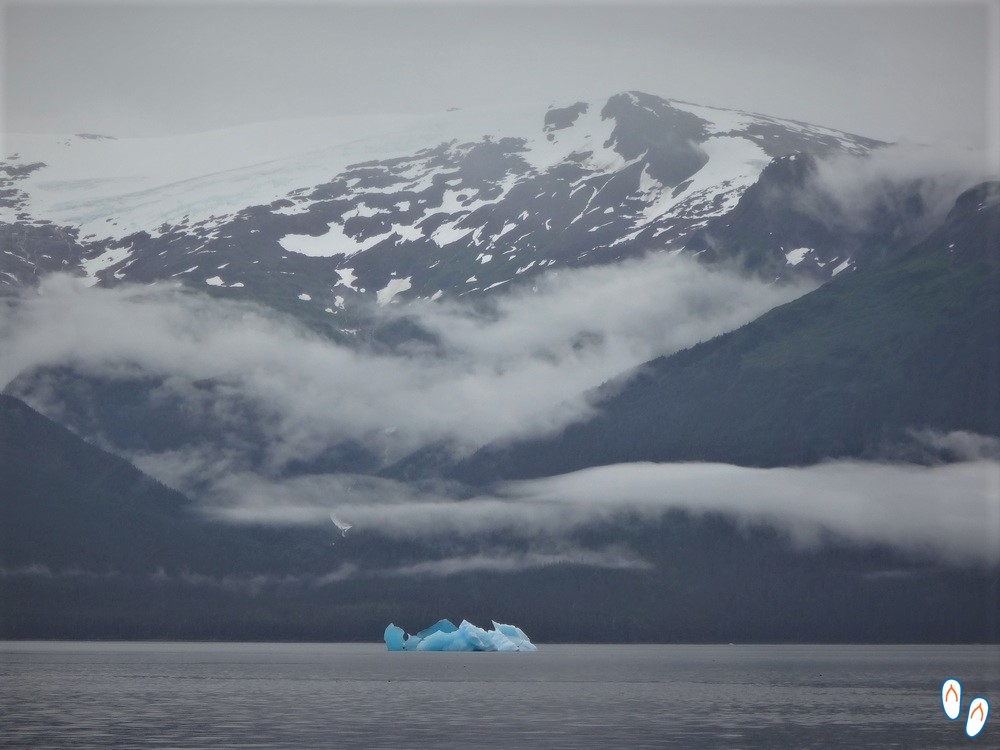 The color of the icebergs in Tracy Arm Fjord are of an amazing blue
The color of the icebergs in Tracy Arm Fjord are of an amazing blue
The boat is very tight, and you should go well prepared for the cold and the humidity. It is allowed to bring your own food, though I did not find it necessary – the snacks served were yummy and at a fair price. But do not forget your camera at any circumstance…bring two if you can! The landscapes inside the fjords are incredibly beautiful, passing through islands, forests, waterfalls, glaciers and icebergs of unbelievable colors. On the way, we saw many birds, a black bear, seals, and, at the end of the tour, we saw two orcas swimming right beside our boat !!!! It was an unforgettable tour! The photos speak for themselves.
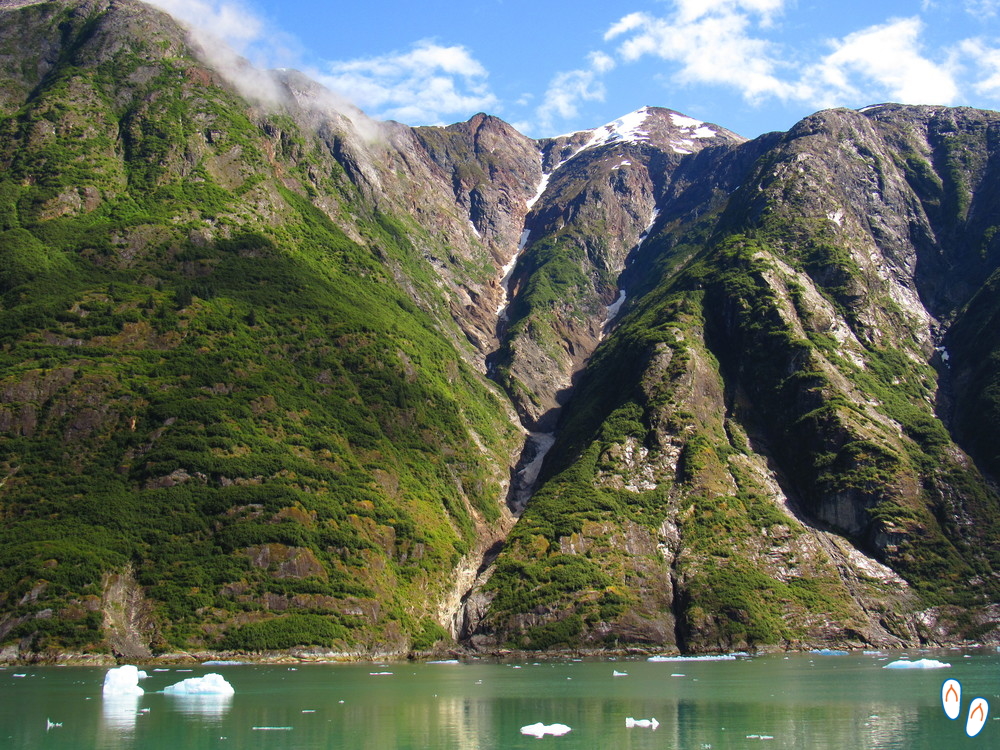
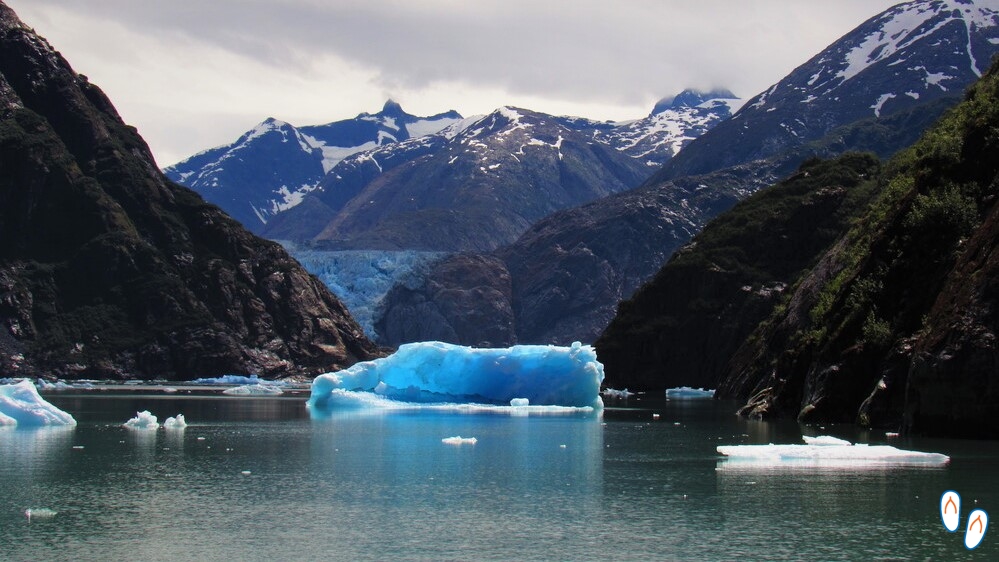
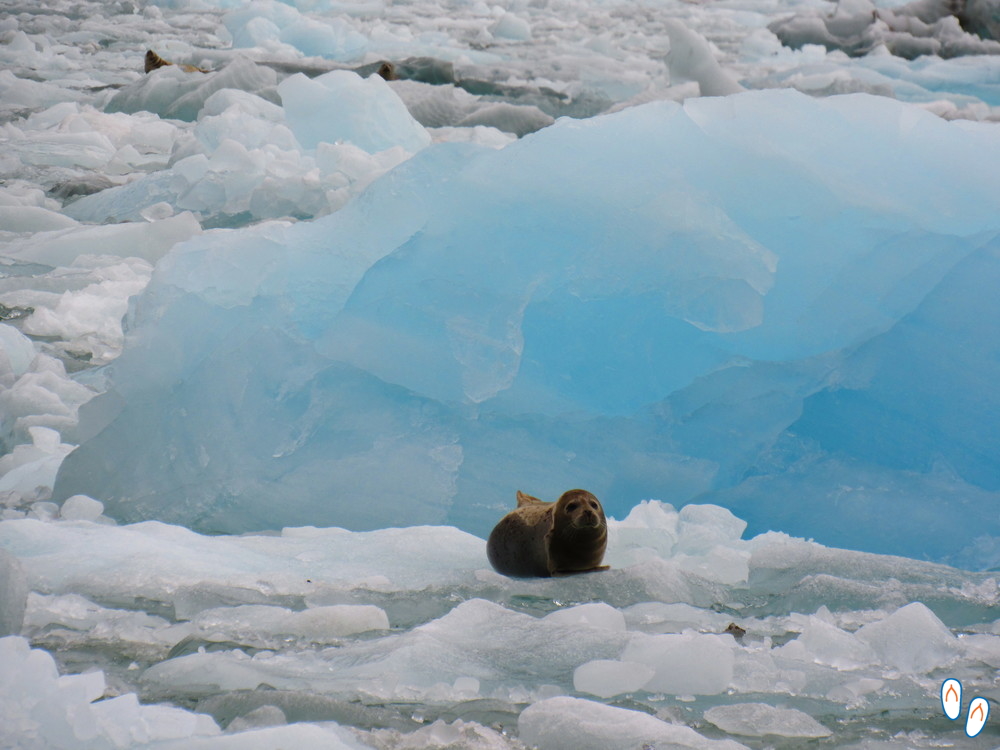
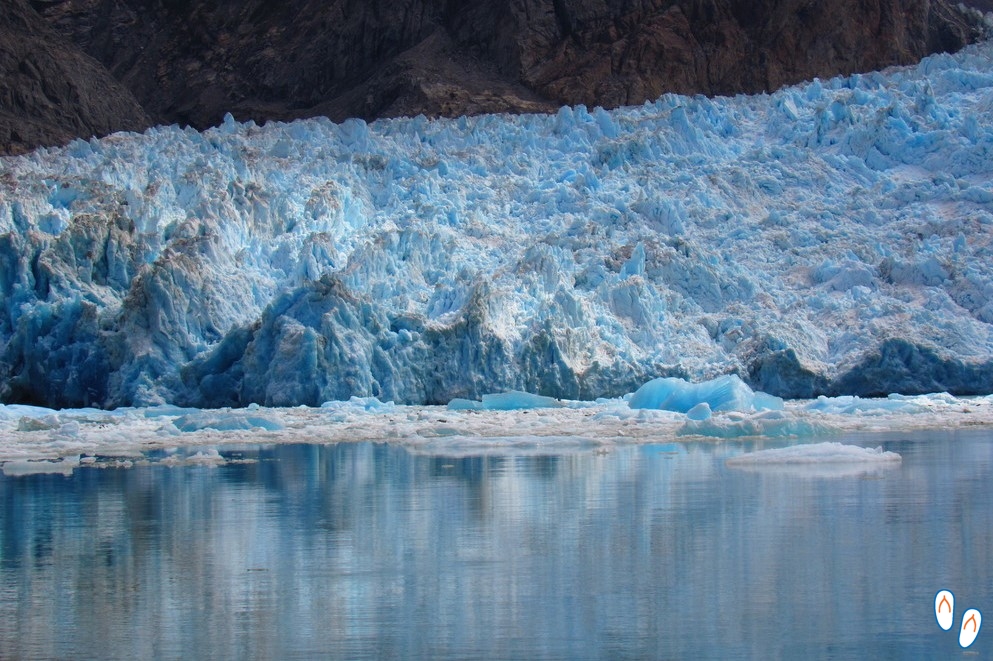

We wanted to do the Ice trekking on the west side of Mendenhall Glacier on the second day but, unfortunately, it was already fully booked. What we do know is that it’s a physically demanding activity (full day) with a considerable cost (around USD 229.00 per person); but it’s also a very unique experience. As well as walking on top of a glacier, you will have the chance to go inside ice caves. The two companies we know that do this activity are: Juneau Shore Tours and Above & Beyond. Note: Hiking on ice requires special equipment and care – self-guided tour are not recommended.
So, we decided to go to the east side of the glacier which is the most accessible area and has a Visitor Center. It is possible to reach the park area by car or bus. By bus, the rate was (in 2017) USD2.00 per way (you need to have the exact value), and there are a few route options – click here to see more details. Buses do not go to the entrance of the park, so check the nearest stop point, that it’s about 1-2 km. The park entrance fee was USD5.00 for up to 2 adults, but if you have the America the Beautiful Annual Pass, all you have to do is show the card. The park has some easy short trail options, and, if you have the time, you can do all of them in one day. A very interesting activity is also the kayak tour that goes right next to the glacier.
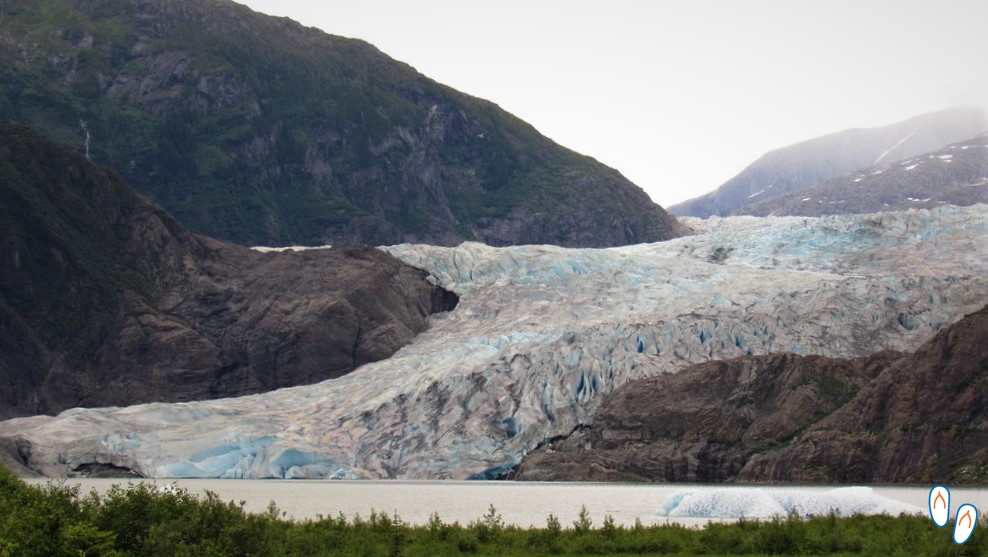 Mendenhall Glacier, Juneau, Alaska
Mendenhall Glacier, Juneau, Alaska
Some Alaskan Curiosities
- The size of Alaska represents 1/5 of the entire US territory;
- Alaska is the 49th American state, and was bought from Russia in 1867 for little more than 7 million dollars;
- The capital, Juneau, is the only US capital in the continent that is not accessible by road;
- You can see Russia from here! The Diomedes Islands (there are two of them), situated right in the middle of the Bering Strait, belongs one to Russia, and other to the United States, and are just 4km away from each other. And a curious fact about them is that the International Date Line is right between these 2 islands. So a person going from Big Diomede (Russia) to Little Diomede Island (USA) on a Sunday will “go back in time” almost 24 hours in just a few minutes.
To take home
If you’re a little bit like me, you’ll fall in love with Alaska right away! To continue getting involved with this incredible place, even from afar, there are two leisure recommendations that I love:
• Movie Into The Wild – this is one of the few movies I’ve watched over 15 times. The film tells the touching story of the young Christopher McCandless, who, tired of the standards and pressures of the society he lived, gave up all he had to distance himself from civilization and seek a new inspiration in nature. You can watch the trailer here.
• Game Never Alone – available for PS3 and Xbox platforms, created by C.I.T.C. (Cook Inlet Tribal Council), a non-profit organization that supports and seeks to keep alive the traditions of Alaska’s indigenous peoples. The game was inspired by Robert Nasruk Clevelend’s book, “Stories of the Black People” (Available in some US libraries but very difficult to find for purchase), and tells a lot about the traditions and stories that were passed on from generation to generation by these people. The game is very well made, and aims to preserve this huge cultural heritage that is now increasingly scarce. The American newspaper The New Yorker did a great article about the game – to read it, click here.



